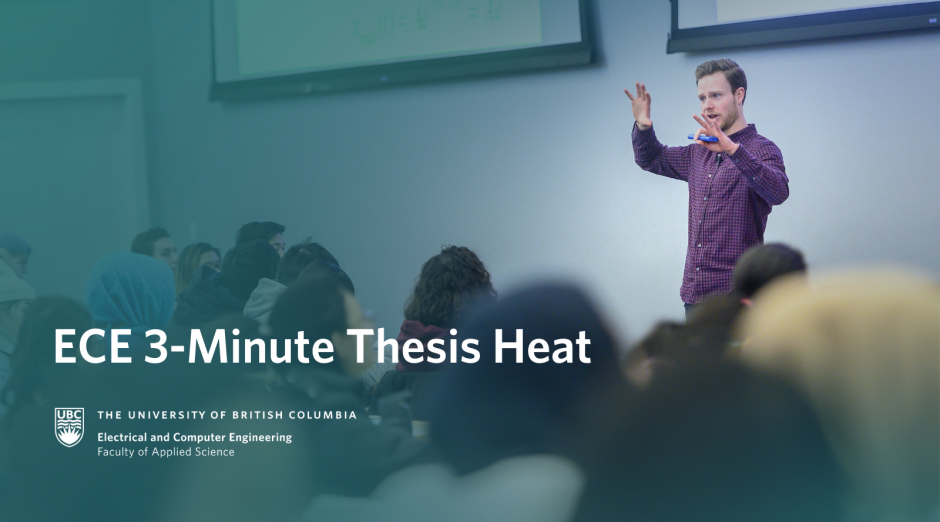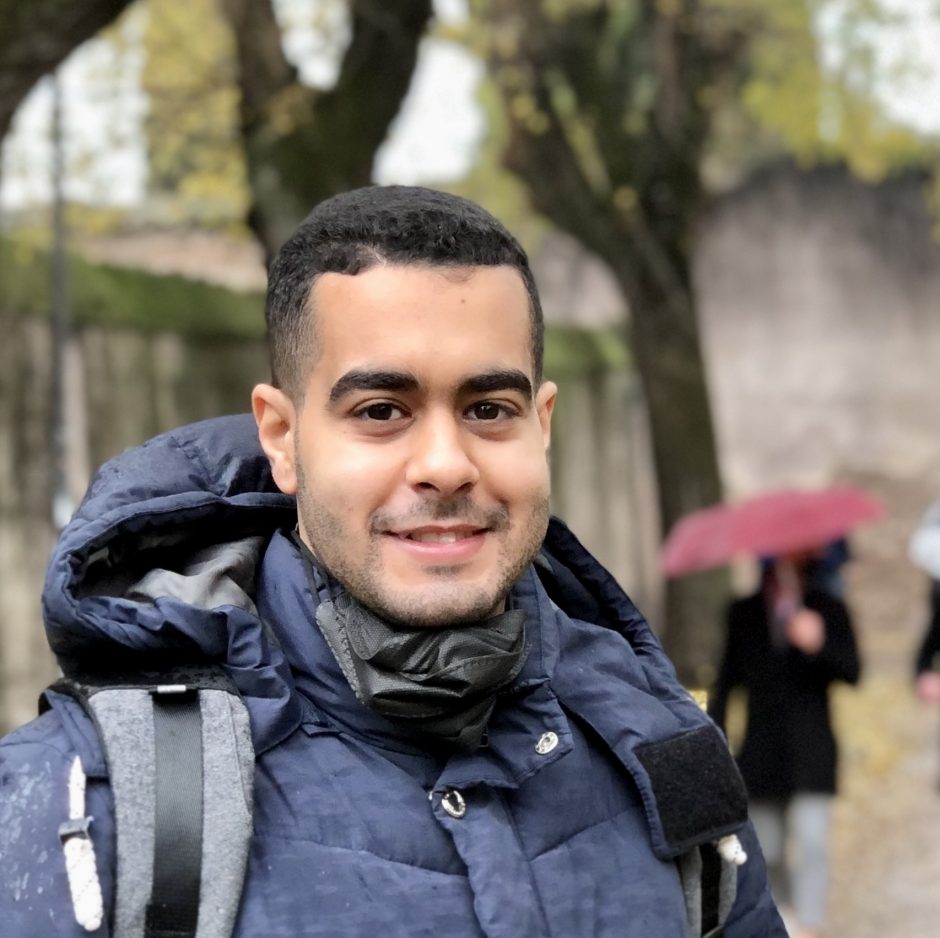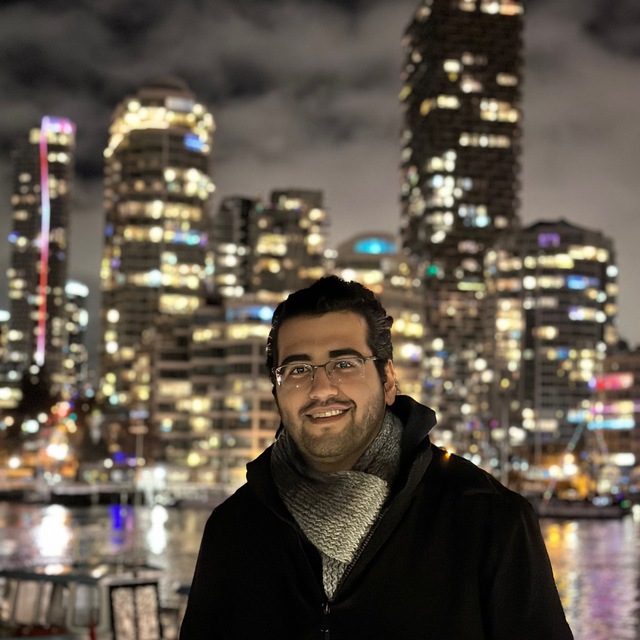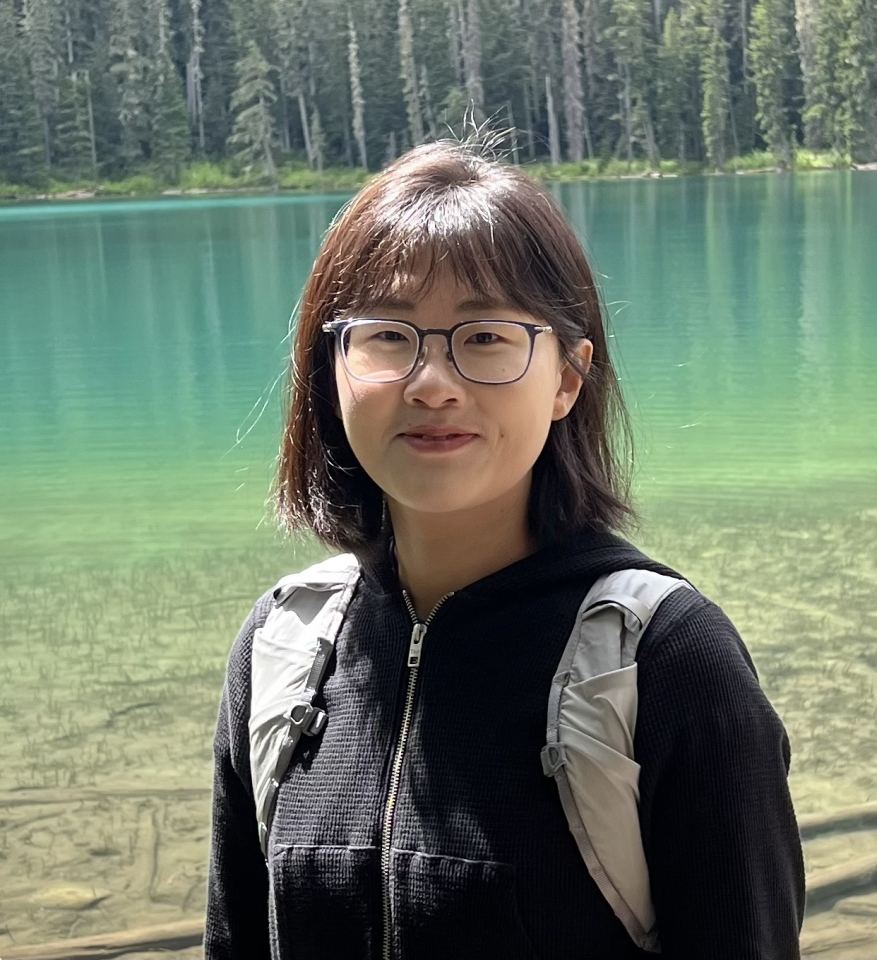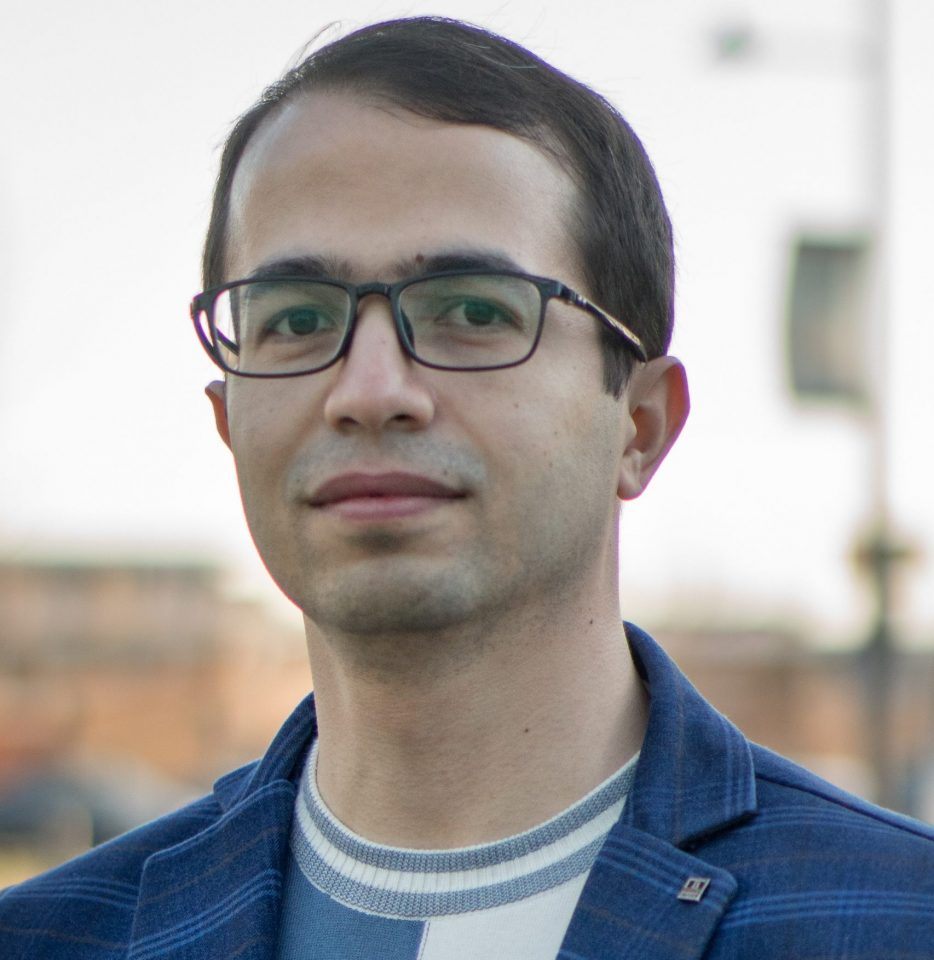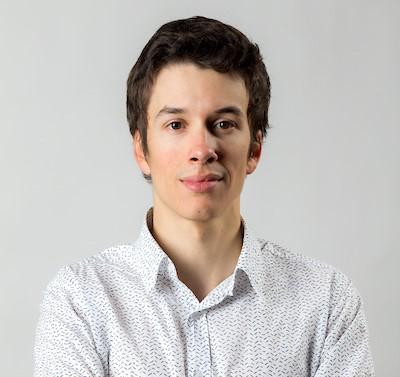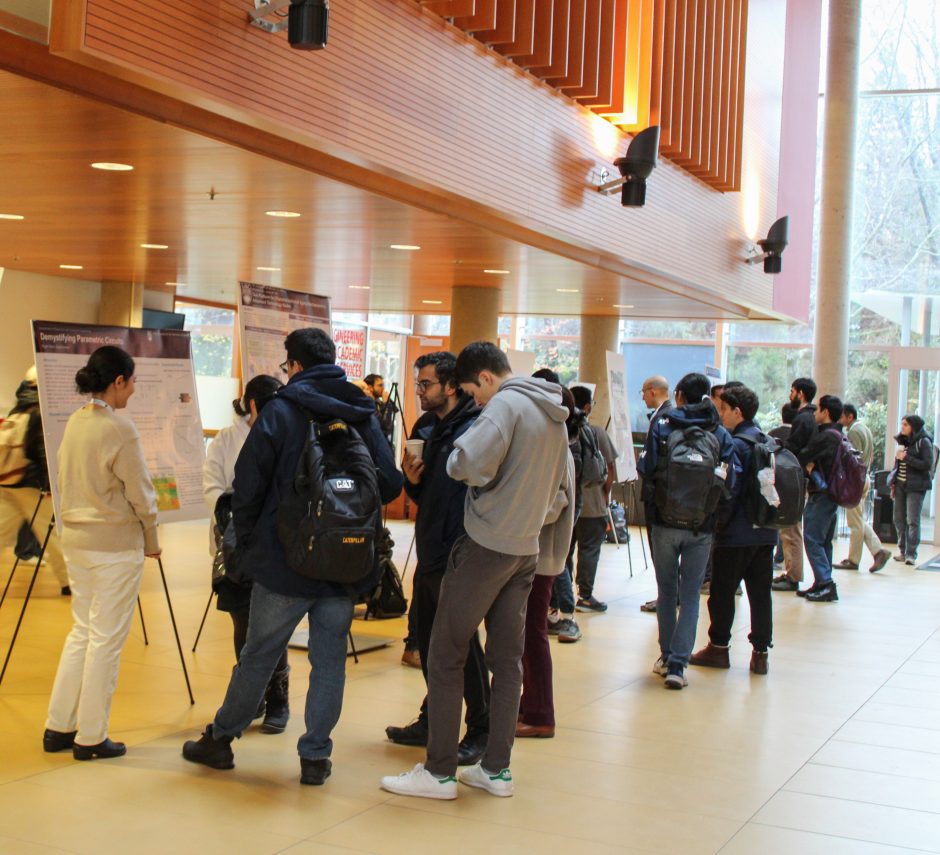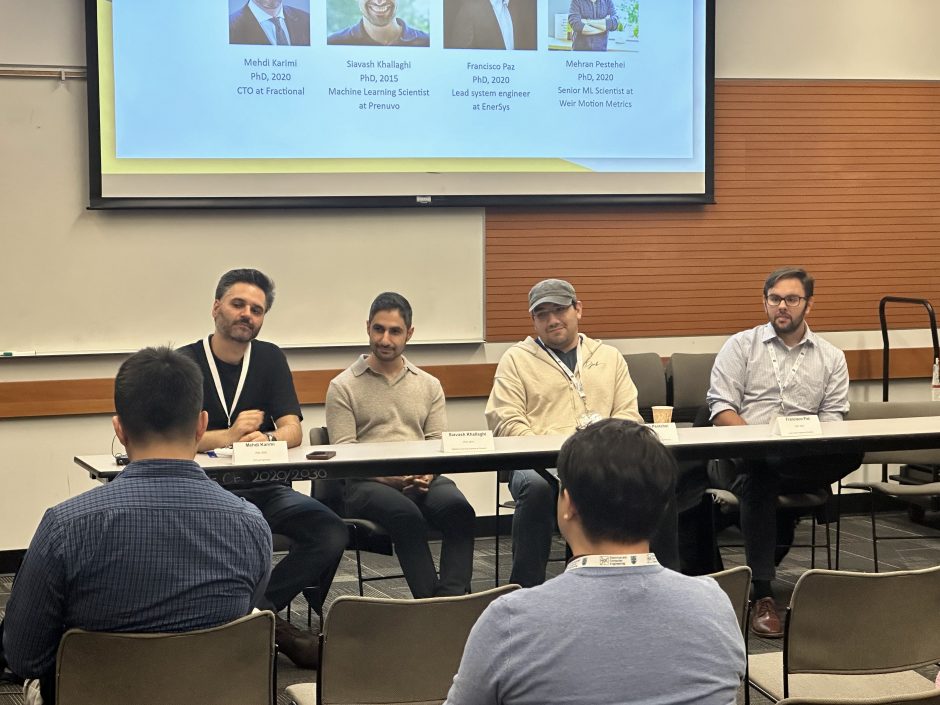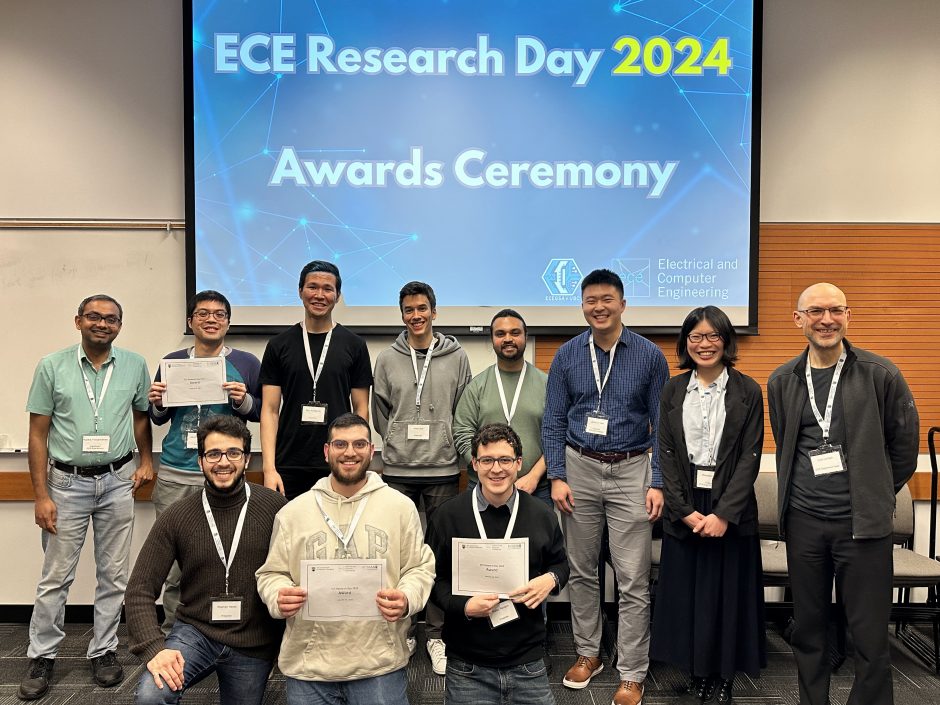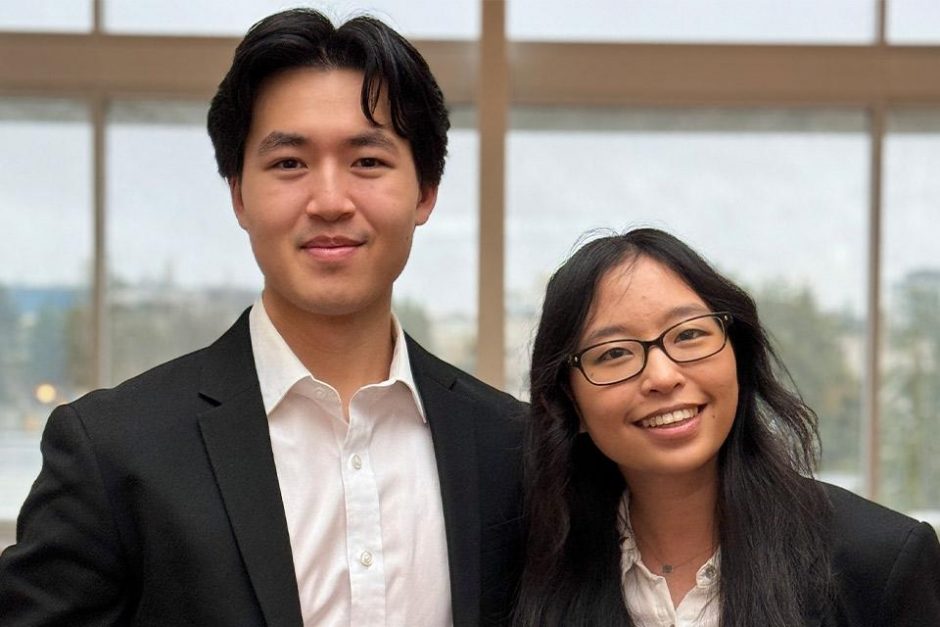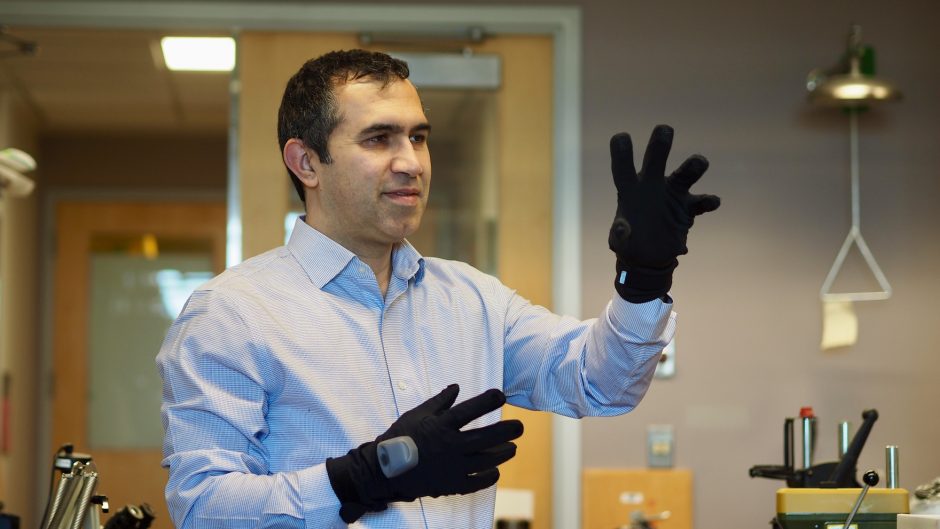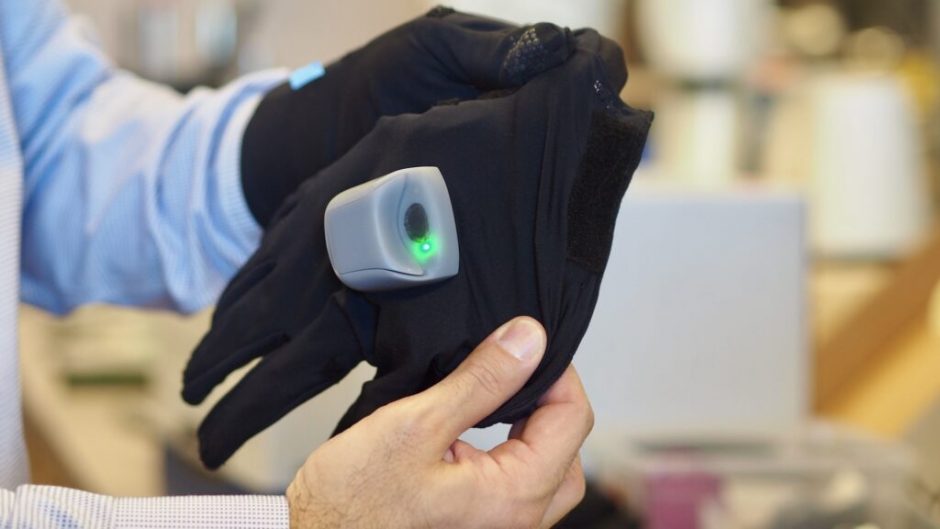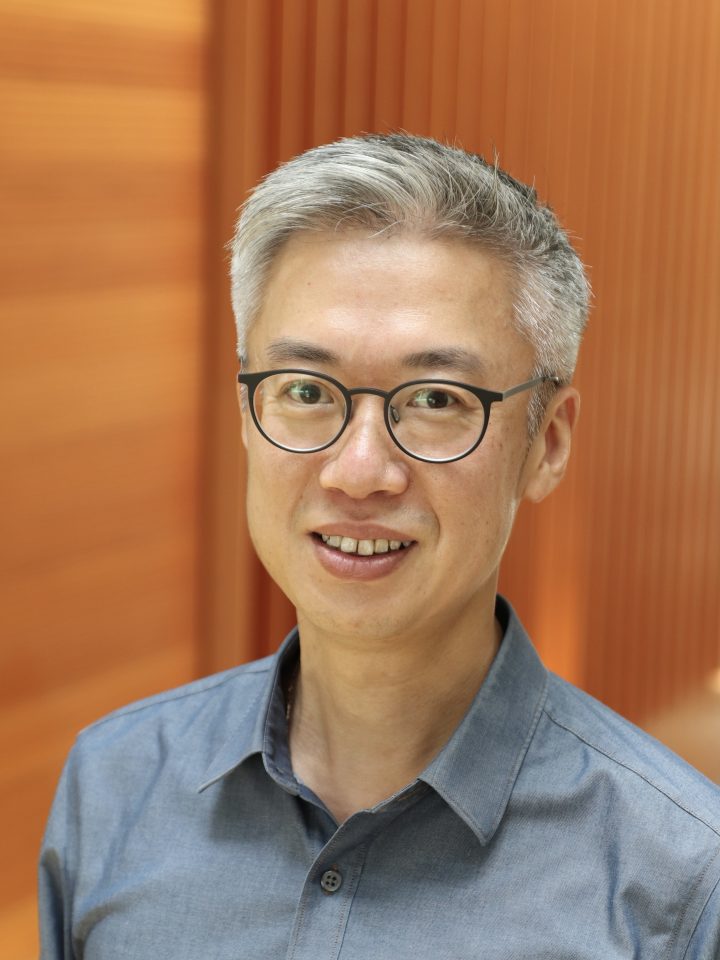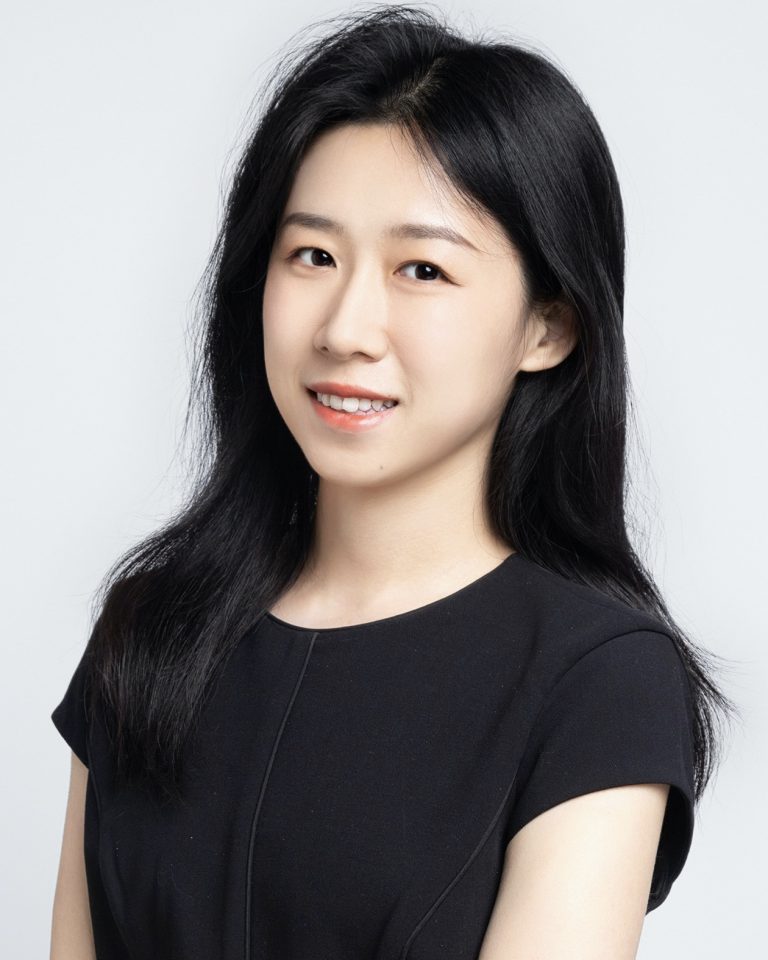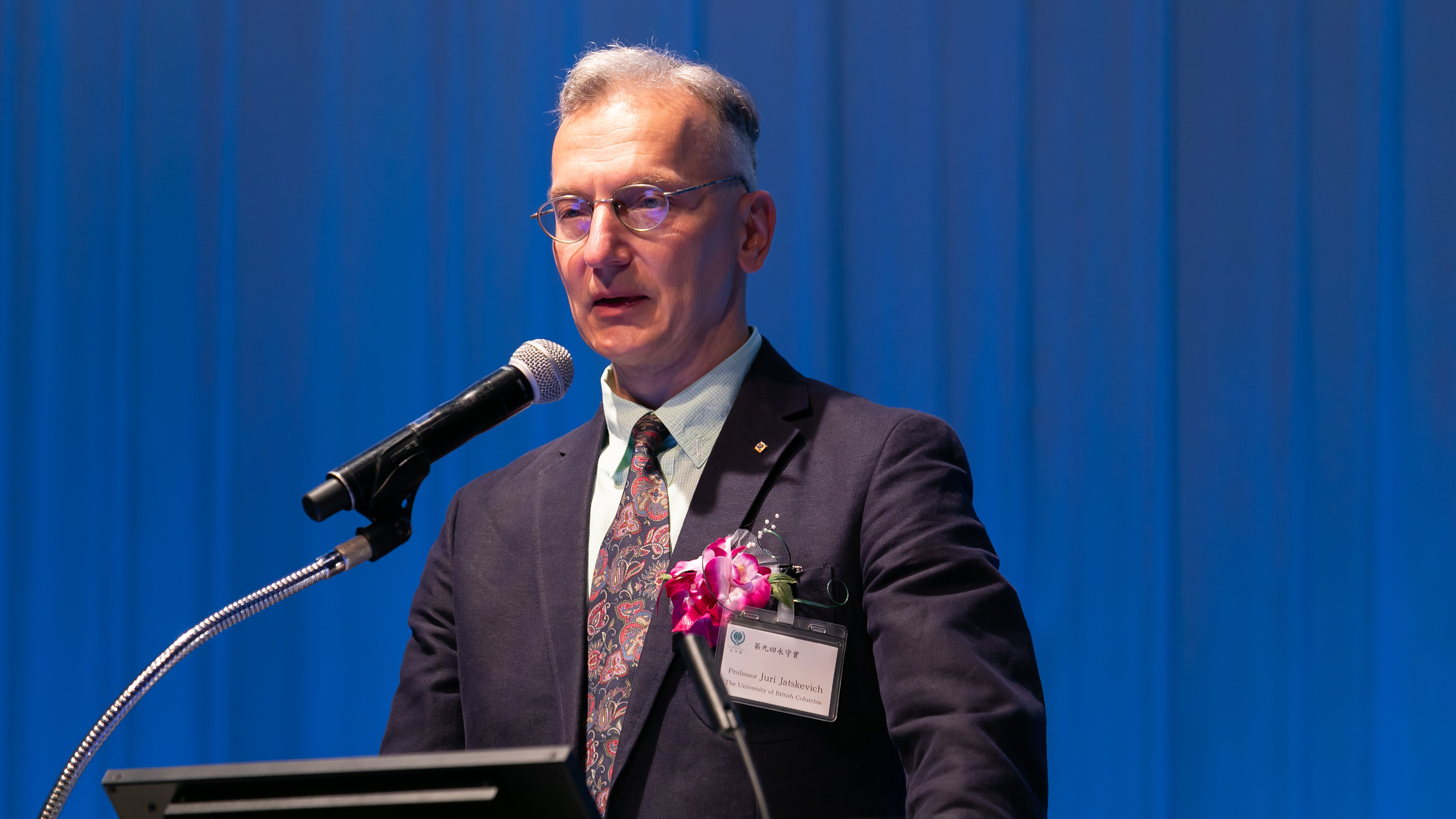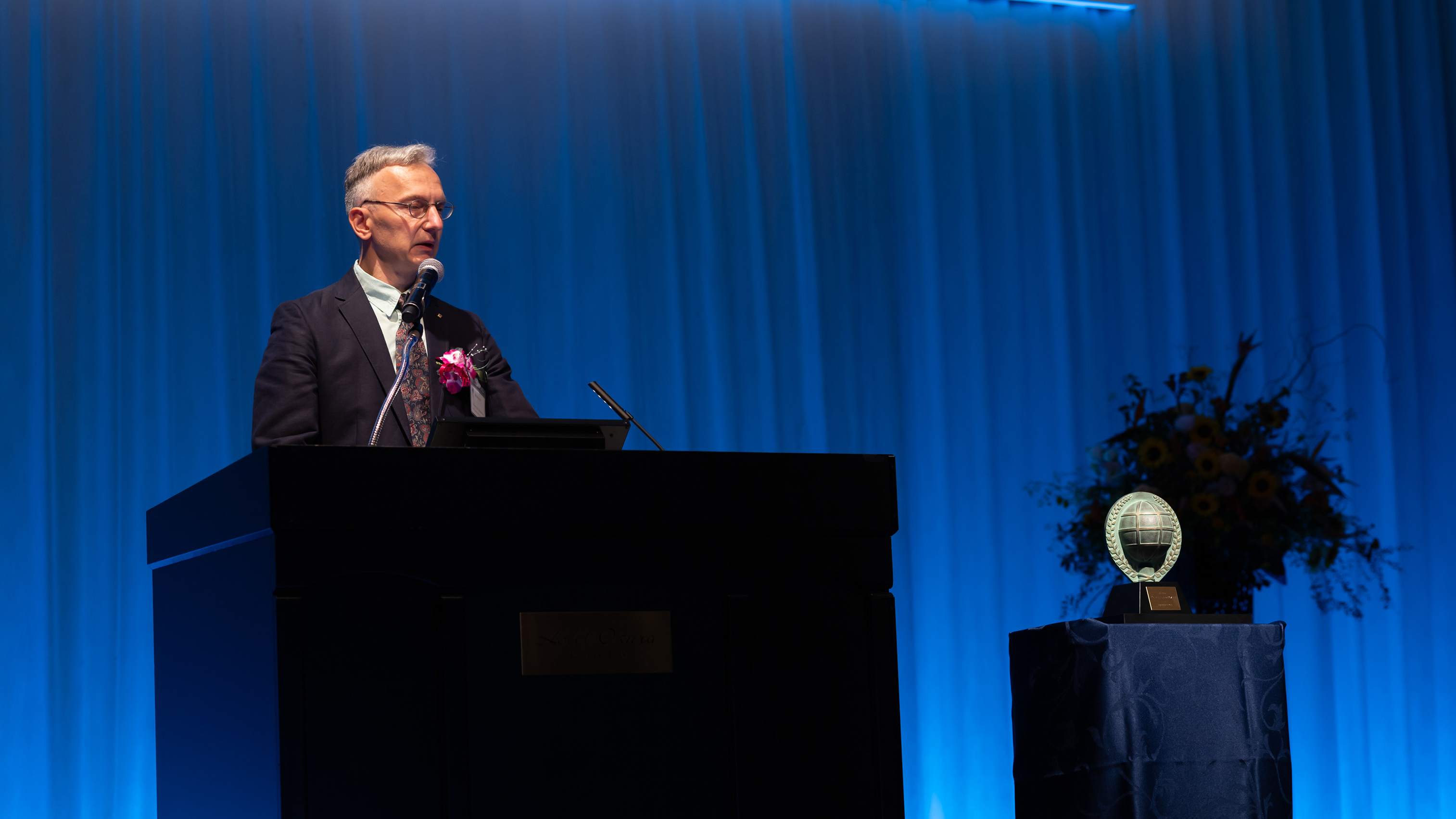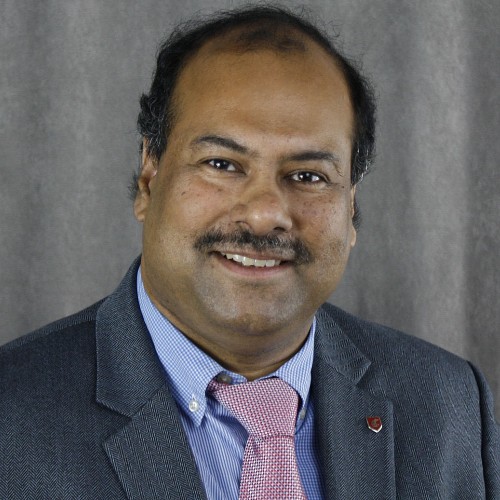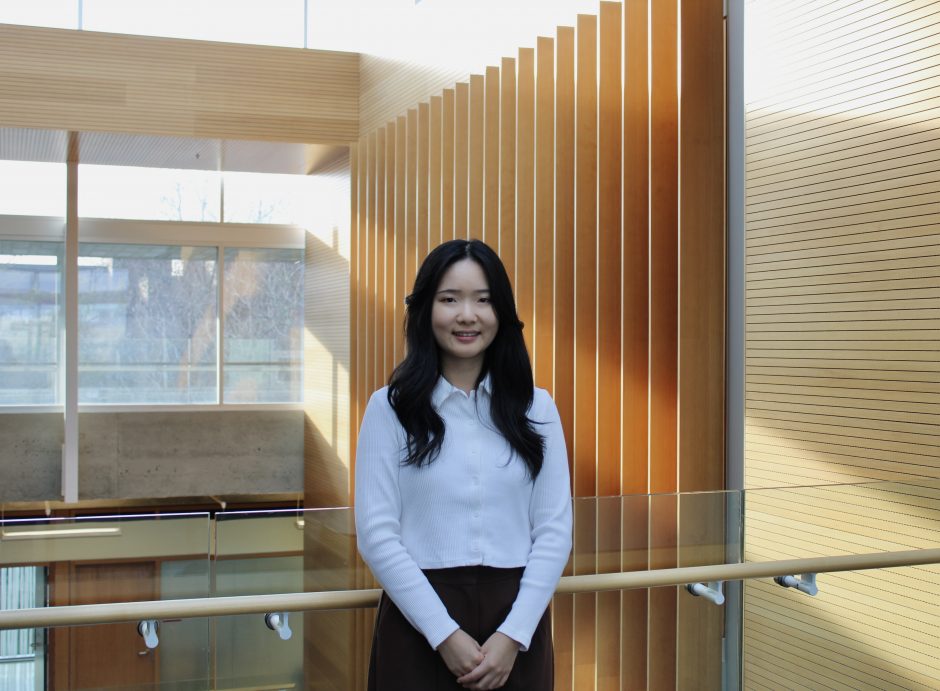
Welcome to Electrical and Computer Engineering Design and Innovation Day!
We are excited to share the projects our students have worked on over the final year of their undergraduate program! The capstone design project is a major component of the ECE engineering curriculum where students work in teams of four to six to design a product/service of significance and to solve an open-ended problem in electrical and computer engineering.
April 11th, 2:00-5:00pm
Capstone Video Awards, 3:00pm
Fred Kaiser Building – 2332 Main Mall, UBC Campus – Atrium and Kaiser 2020/2030
https://design-innovation.apsc.ubc.ca/
Browse through our ECE projects and abstracts featured at Design + Innovation Day!
Emerging Technologies and Innovations
Industrial Automation and Processes
Environmental Monitoring and Sustainability
Healthcare and Medical Devices
Transportation and Mobility Solutions
Artificial Intelligence and Software Systems
Map
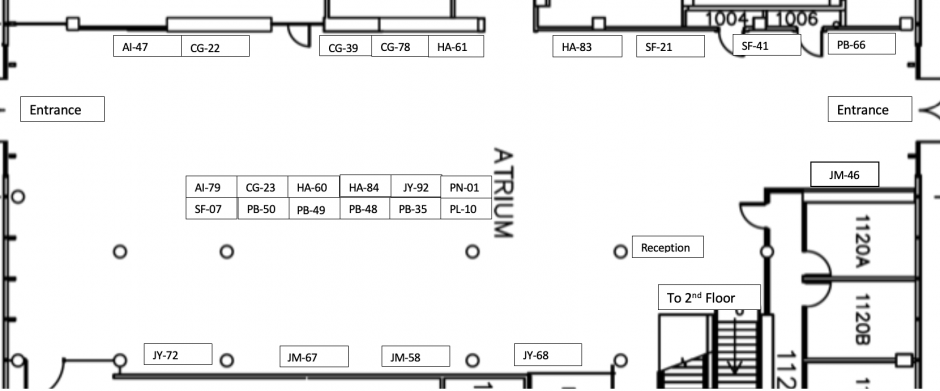
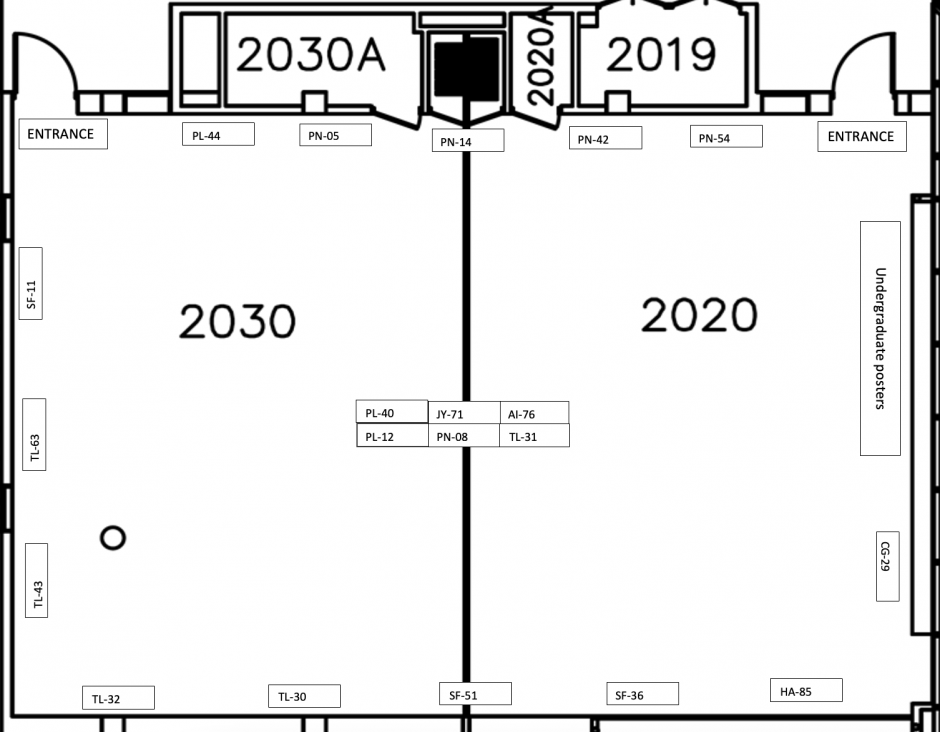
Projects
| Team Name | Title | Company | Project Theme |
| AI-47 | From Chips to Kits: Demonstrator Kits for Next-Gen Silicon Photonic Chiplets | Dream Photonics Inc. | Industrial Automation and Processes |
| AI-76 | ZEROe Sailing Vessel Electrical Integration | Alberni Yachts Inc. | Transportation and Mobility Solutions |
| AI-79 | Water Level Depth Logger | Opus Petroleum Engineering Ltd. | Emerging Technologies and Innovations |
| CG-22 | Using IoT Devices (Raspberry PI) to Count People For Occupancy or Traffic | UBC Cloud Innovation Centre | Emerging Technologies and Innovations |
| CG-23 | Remote Sensing for Forest Fires | UBC Cloud Innovation Centre | Environmental Monitoring and Sustainability |
| CG-29 | iHear | Deng Audio Research | Healthcare and Medical Devices |
| CG-39 | Detecting Buried Metallic or Non-metallic Anomalies | Rampart Detection Systems Ltd | Emerging Technologies and Innovations |
| CG-78 | Precise Detection of Free Street Parking Using AI and Video Processing | UBC – Digital Multimedia Lab | Emerging Technologies and Innovations |
| HA-60 | Development of Renewable Energy Assessment Tool Mine Site | Fluor Canada | Environmental Monitoring and Sustainability |
| HA-61 | Electrification of Harbour Air Beaching Gear | Harbour Air Aerospace Services | Transportation and Mobility Solutions |
| HA-83 | Sizing of Temporary Personal Protective Grounding Cables | BC Hydro | Industrial Automation and Processes |
| HA-84 | Medium Voltage Underground Cable Circuits Ampacity Tool | BC Hydro | Industrial Automation and Processes |
| HA-85 | Frozen Soil’s Impact on the Thermal Resistivity’s Used in Medium Voltage Cable Circuit’s Ampacity Calculations | BC Hydro | Industrial Automation and Processes |
| JM-46 | Bass Guitar Pluck Type Classification Using a 2-D Piezo Pickup | Yamaha Guitar Group, Inc | Emerging Technologies and Innovations |
| JM-58 | Developing a Wearable ExG Device to Study Sleep | SimPL lab | Healthcare and Medical Devices |
| JM-67 | Backend Development for Motor Deficits Detection Using Hand Drawing and Facial Expression | NeuroPrior AI | Healthcare and Medical Devices |
| JY-68 | Development of a Wearable Sensor Device for Human-Robot Interaction with EEG Capabilities | NeuroPrior AI | Healthcare and Medical Devices |
| JY-71 | 3-Axis Motion Control Testing System | NovaSense Technology Ltd. | Industrial Automation and Processes |
| JY-72 | 3-Axis Motion Control Fabrication System | NovaSense Technology Ltd. | Industrial Automation and Processes |
| JY-92 | Wearable System for Health Status Monitoring | Adaptive Microsystems Lab (AdaMist), The University of British Columbia | Healthcare and Medical Devices |
| PB-35 | Automated Test Framework Migration | Industrial Automation and Processes | |
| PB-48 | Real-time Market Data Collection System | Tartigrade Limited | Artificial Intelligence and Software Systems |
| PB-49 | Automated Invoice Processing App | Tartigrade Limited | Artificial Intelligence and Software Systems |
| PB-50 | Talent Acquisition Automation | Tartigrade Limited | Artificial Intelligence and Software Systems |
| PB-66 | Slice-based Debugging for Java Development Environments | UBC ECE, ReSeSS Research Lab, Dr. Julia Rubin | Artificial Intelligence and Software Systems |
| PL-10 | Exploring Uncharted Chemical Space of Environmental Exposures using Graphical Neural Networks | University of British Columbia | Artificial Intelligence and Software Systems |
| PL-12 | Passive RF System for 24/7 custody of Space Objects in GeoSynchronous, Cislunar Orbits and beyond | MDA Systems Lid | Industrial Automation and Processes |
| PL-40 | Leveraging LLMs for a Course Question-Answer Repository | UBC Cloud Innovation Centre | Artificial Intelligence and Software Systems |
| PL-44 | Intelligent Intersection Communication Hub | Breeze Labs Inc. | Transportation and Mobility Solutions |
| PN-01 | AI Based “Co-pilot” to Assist Solar Project Managers with Crew Assignment & Scheduling | Scoop Robotix Inc. | Environmental Monitoring and Sustainability |
| PN-05 | Immersio Immy Chat | Immersio | Artificial Intelligence and Software Systems |
| PN-08 | Wet GPU Software Stack | Samnian Software Inc. | Artificial Intelligence and Software Systems |
| PN-14 | Open Data: Aerial Drone Footage – Lost Hiker Challenge | UBC Cloud Innovation Centre | Emerging Technologies and Innovations |
| PN-42 | Product Image Generator to Create Variation of Product Images at Scale (Using AI and Content Generation Engines) | Esparkify | Artificial Intelligence and Software Systems |
| PN-54 | Efficient HW Implementation of DNN based Frame Rate Up Conversion (FRUC) for Real Time Video Transcoding | NetInt | Artificial Intelligence and Software Systems |
| SF-07 | Interactive Augmented Reality Factory | UBC MANU Program | Emerging Technologies and Innovations |
| SF-11 | Event-focused Carpool: Connecting Communities Through Innovative Web-Based Carpooling Solutions | CarPals | Transportation and Mobility Solutions |
| SF-21 | Video Streaming Using Cloud Technology | UBC Cloud Innovation Centre | Artificial Intelligence and Software Systems |
| SF-36 | A Lab in a Shoe: Detecting Trips and Stumbles With a Wearable Device | University of British Columbia | Healthcare and Medical Devices |
| SF-41 | Human Anatomy Teaching App | UBC Faculty of Medicine | Healthcare and Medical Devices |
| SF-51 | IoT Solutions for Sustainable Beekeeping | FEC | Environmental Monitoring and Sustainability |
| TL-30 | Mapping Below the Forest Canopy (Part 1 – Software) | Korotu Technology Inc. | Environmental Monitoring and Sustainability |
| TL-31 | Mapping Below the Forest Canopy (Part 2 – Hardware) | Korotu Technology Inc. | Environmental Monitoring and Sustainability |
| TL-32 | Use of Frequency Modulated Continuous Wavelength Radar (FMCW) to Detect Heart Rate, Respiratory Rate of Patients in Hospital Waiting Rooms, Seclusion Rooms and those in Police Custody | Aberrant Designs Inc. | Healthcare and Medical Devices |
| TL-43 | Gesture Control and Vital Function Detection using 60GHz Radar Sensing and AI/ML processing | Delta Controls Inc. | Healthcare and Medical Devices |
| TL-63 | Measuring Forest Change with AI | Korotu Technology Inc. | Environmental Monitoring and Sustainability |
